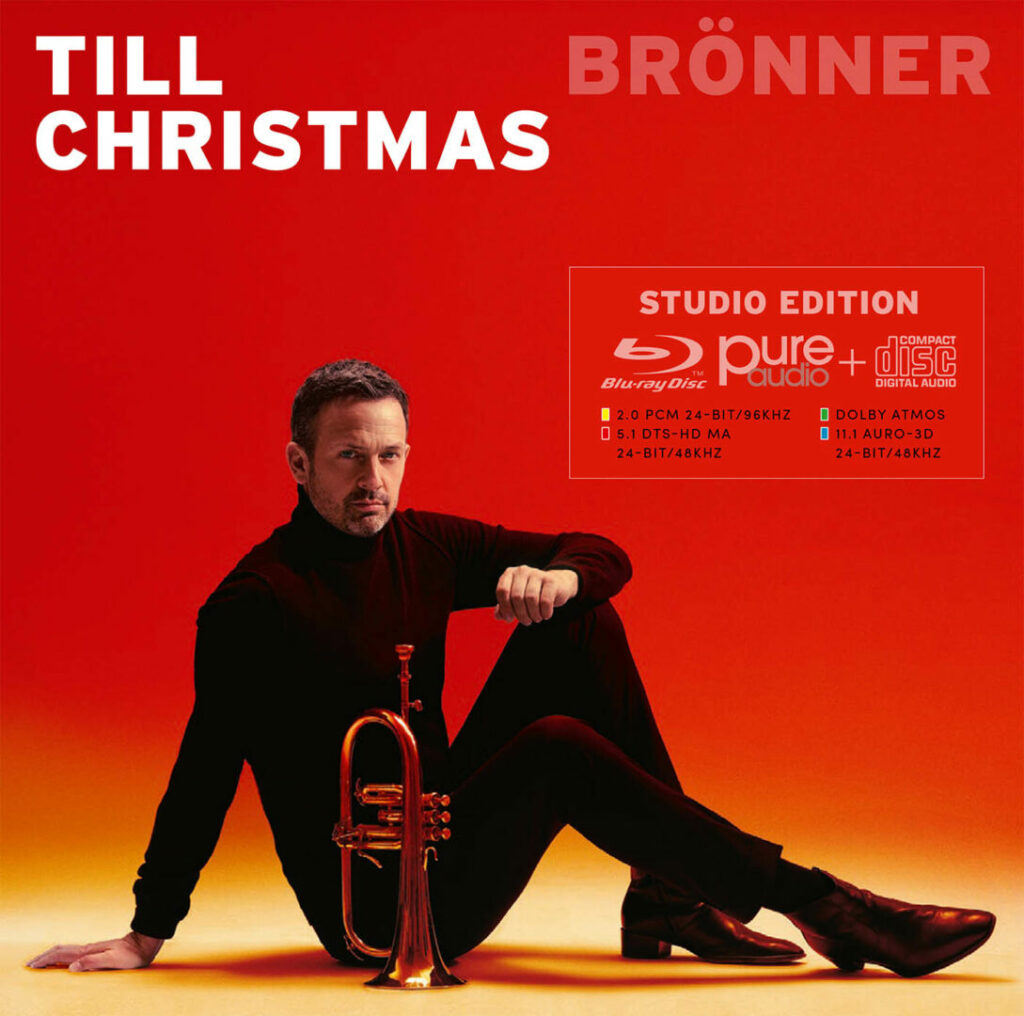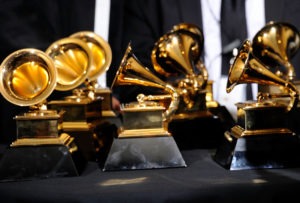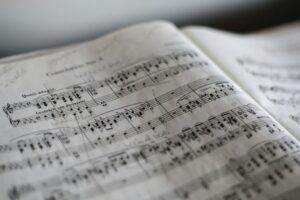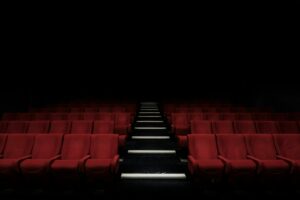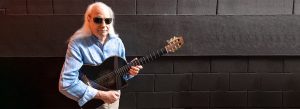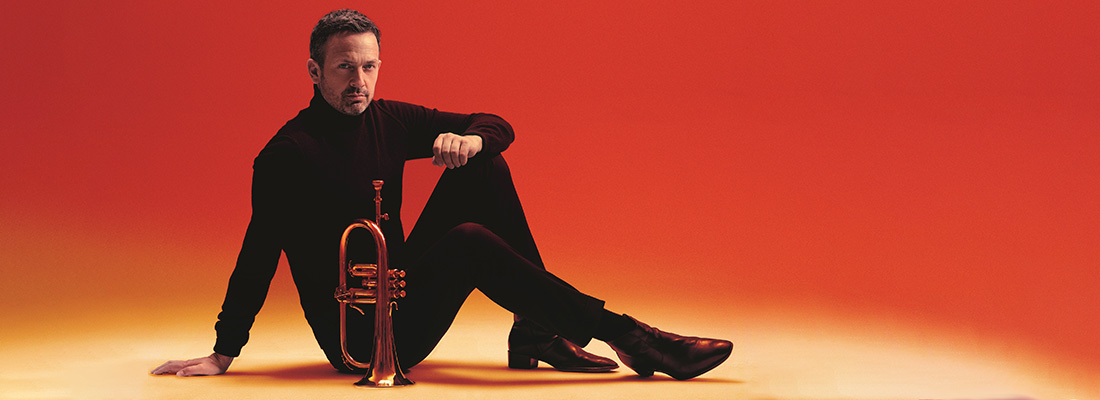
Slowly the first Christmas markets are opening, it’s getting cold outside, the nights are getting longer again. After two years of pandemic-related restrictions, the run-up to Christmas is a little more familiar than in previous years.
Till Brönner’s very intimate Christmas album “Christmas” was created in the middle of this very pandemic time and conveys a slightly different, more reserved Christmas spirit in its atmospheric mix. We spoke with him last year about the album, the influence of Pandemic, and the album’s Dolby Atmos mix. The interview was conducted by Christoph Diekmann.
Today we want to talk about “Christmas”, a beautiful production with Christmas songs, cover versions and American evergreens. The whole thing is produced very “covermusically”, you with trumpet and flugelhorn and then piano and bass. Personally, I think it’s a very intimate production and the time it was made was exciting and occupied with many other policies. How did this production come about? What was the original idea?
I had the chance and honor to do a Christmas album a few years ago. This was actually a classic Christmas album, if you will. Little of what can be heard on this current album, but a lot of tinsel, a lot of bells and snowflakes falling off all the walls, so to speak. That’s also right and just because of that it occurred to me to maybe present an alternative Christmas album this time. One that fits a bit more in time. Because one thing has always been clear to me, regardless of whether we will now have defeated the pandemic, Christmas is a very, very important holiday for people.
Even though we have now become a bit accustomed to the situation, I actually thought I was quite right in predicting that the first festival that we will celebrate as such again, but also more contemplatively and somewhat more modestly, will be Christmas 2021/22. And that’s how the music should sound. I think in a way I was on trend there in a somewhat melancholic way with what’s on the album.
Your companions, Frank Chastenier on piano and Christian von Kaphengst on bass, have been with you for many years. I feel such a tenderness in the interpretation of this song selection. How would you describe the collaboration or interaction with them?
You’re right about that. I’m glad that you might hear that, too, because that was a little bit of the goal. The restriction to the most essential and the search for my own person, my childhood, at some point led quite automatically to the selection of musicians. Because Christian von Kaphengst and Frank Chastenier are certainly the musicians with whom I have played the longest in my life.Because Christian von Kaphengst and Frank Chastenier are certainly the musicians with whom I have played the longest in my life. We know each other like the back of our hand and can sense what is happening on the other side.
It was important to me, in this very manageable and intimate chamber music line-up, to naturally draw on musicians and personalities who would be able to reflect this intimacy. This is a great matter of trust, to record only separated by panes in the same room. From the point of view of many producers, this is oldschool, but for us it was an absolute must in this case.
I’m totally happy that after five days, without knowing what we were going to record, we could leave the studio with a classic production. There was a lot of blood, sweat and tears, but also a lot of spontaneity. In retrospect, we certainly always went for the very first take of two, three at the most, on most takes, because it just worked quite well. I am therefore also very happy with the result.
How did the selection of songs come about? Did that come about together or did that come from you?
When I look at the tracklist today, I realize that it has a lot to do with my very personal youth and childhood. It’s certainly the combination of my love of jazz on the one hand, and the Great American Songbook and the American Christmas feeling, which really feeds more on Santa Claus and sleigh rides and lots of movies, on the other.
Then there is the Christian, European Christmas, which for me is also very much fed by hymns. With “Maria durch ein Dornwald ging” and “Ich steh an deiner Krippen hier” by Johann Sebastian Bach, there are pieces that I know from church and some of which I have played myself.
And the third genre is songs that are and were in movies that were always on TV between the years in Germany when I was young. “La Le Lu”, the lullaby from the film “Wenn der Vater mit dem Sohne”, is included at the very end. Then there is “Jesus to a Child” by George Michael, who wrote the most successful Christmas song in the whole world, “Last Christmas”, and Christian von Kaphengst’s idea was whether one might not find a second time with George Michael. And last but not least Max Mutzke as a prominent vocal guest with “Christmas Time Is Here” on our album – I’m very happy about that.
I wanted to come back to that. Max Mutzke, one song with vocals, the rest purely instrumental. How did Max get involved, how did that come about?
When I shortlisted the song, I first sang the demo myself. Our journey in the studio so far has been very much about sticking to the basics. This, of course, also makes the exposure of each element much, much clearer and more noticeable. At that moment I simply realized that the restriction to the essentials of Till Brönner is really the trumpet solo and not my occasional singing – which I enjoy very much and which is certainly also very personal. But I thought: Well, to be honest, someone has to sing there who does this full-time. Max was definitely the right person to talk to and he immediately wanted to do it and I’m happy that he was part of the team.
Have you worked together before?
Occasionally we were able to play live together with Nils Landgren or Torsten Gutz in the south of Germany. But we have known each other for a very long time, not least through Stefan Raab, and we adore each other very much. Max comes from an extremely musical family and his brother Wenzel is an incredibly good trumpet player, one of the best we have in Europe. It’s just a music connection and family that even without being related by blood, it feels like that.
You recorded the album at Teldex Studios in Berlin and Arne Schumann took care of a great sound again – 24/96 bit, and I was allowed to be there briefly when Arne was mixing and listen in a bit. This Atmos version, which is our focus on the whole issue, how did that come to you? What is your relationship to it? Were there any thoughts about producing it that way before?
First of all, a little correction: We recorded it at Hansa Studios, two floors above Emil Berliner, so to speak, and that was also an emotional matter for me because I was allowed to produce my very first CD at the beginning of the 90s with Ray Brown on bass in this studio. That was already a very big thing for me at that time: First record and right there where David Bowie and U2 were and then with Ray Brown, with whom I stood in the elevator together. We didn’t get stuck – thank God – but I wouldn’t have minded sitting in close quarters with Ray Brown for the next two weeks either. So I was totally chloroformed. Coming back to that was a nice feeling.
Sonically, and in terms of celebrating quality and frequencies and experientiality, I’ve always been interested in the last few years when something like that has been brought to me. I actually thought it was only a matter of time that a format was actually about to make its presence felt again. A format that makes the quality and the resolution and also the spectrum in the music the chief topic again. I remember very well back then when we were looking at 5.1 mixes and the SA CD, which unfortunately didn’t catch on as much, and actually mixed at least two albums in that format as well. That’s a rarity these days, but the experience of actually being able to make multiple channels and a wider spectrum available to the public when mixing is something that always fascinates me.
What was it like when you first heard Atmos, on this production? You were probably part of the mix or listened in between. Did that reflect the room you were standing in? Did it reflect the space you were standing in? That’s also the idea, to reflect an airiness and a softness.
I think it’s very right and important to start from the feeling you have when you play. We artists are always a bit spoiled because the sound of an orchestra and what’s going on around you is naturally in the close range of what you’ve learned. Very few people out there have had this experience, but I wish them well.
That’s why any format that is straightforward to access – definitely true in this case with Atmos – is something I also support. I sometimes compare it a bit to the way we record. It’s not uncommon for us to record with microphones that are added to supposedly inconspicuous places so that we can add the room itself in the end – similar to the way people used to work with reverberators. It’s a very, very nice experience, which in that case Atmos makes a little bit more experiential.
For me, we are very much at the beginning of the topic of “spatial listening” and I hope it will play its way into the conception of productions, theoretically also compositions: How do I deal with such a space? Where can I position what? You approach music in a completely different way when you have the possibility to work with such objects or things that happen around you and not to have in the end, I say, a stereo, left-right sound image in front of you, but to really position things around you as well. Is that something you see as an artistic possibility for you in the future in the area of production or also conception or composition, to work with this space?
So my thoughts were actually spontaneously that I, like all musicians who record in studios around the world, have to reckon with the fact that something like an interest in it must arise on the so-called end consumer side. If we don’t end up having devices that can play it, that was a bit of the problem with the SA CD at the time, then I think it would be very difficult, was always my thought. But in this case it has become a bit easier through Atmos and I think that maybe also in the live sector sooner or later the question will arise whether an experience doesn’t actually penetrate a bit more into people’s cerebral cortex through additional axes, above all acoustic axes, than has been the case up to now. We are already experiencing hologram technologies and many, many innovations.
I think it is precisely in this context that one would now have to examine how a live sound experience could be created in this way. That would be my thought, irrespective of the fact that the question arises: Can we actually achieve something in the future in this respect without additional loudspeakers in apartments and homes. I am very interested in that.
I think there’s still a lot of room for development. We’re just seeing what’s happening there with binaural stereo on headphones, it’s going into the car with appropriate speakers, there’s already a way to go. It will certainly not happen what happened with the SA CD because we have a format that is established. The desire for multi-channel sound has already been generated by the film industry and hardware is accordingly already installed in many households.
Absolutely.
Is there anything else about the album that you would like listeners to know?
Quite so, yes. Although I always feel that music must do without explanations and without words, otherwise it might be a bit out of place or even unnecessary. But the personal thing about this album, that’s always important to me. It’s a Christmas that I think is going to turn out much more contemplative and that’s why this is this soundtrack to it. It’s this feeling: yes, we need to move closer together, but above all in reduced numbers. We need to be a little more humble to perhaps see the truth. This also has extremely positive aspects and that’s how this album sounds. It celebrates chamber musicianship, and it may be the album that mom and dad listen to together with a good glass of wine after the kids are already in bed. That would be a pleasure for me.
I think that’s what’s going to happen. Lastly: How do you listen to music at home? Stereo or also multichannel?
At home, I actually listen, at the very most, to stereo. That’s simply because, ultimately, reality has also been with us, in the way we produce music, for me for years. We need to be able to achieve the effect on the worst sounding device at the end of the day. And if it comes across sounding there, then we are very much in the right place in case of doubt, even with very, very expensive apparatus and constellations.
Still, the moment for me is in the recording studio – really feeling what it’s all about, tracing and hearing details, especially when I’m working with Arne Schumann, who is something like my DNA and flipped in the recording studio – one that I’m still testing to see if it’s up to date. I still have a lot of fun with it and sometimes I have the feeling that I might even lose a little bit of understanding and sensitivity and then when I’m working in the studio with Arne, I realize, I still have it, I’m still interested, I don’t have broken ears yet.

